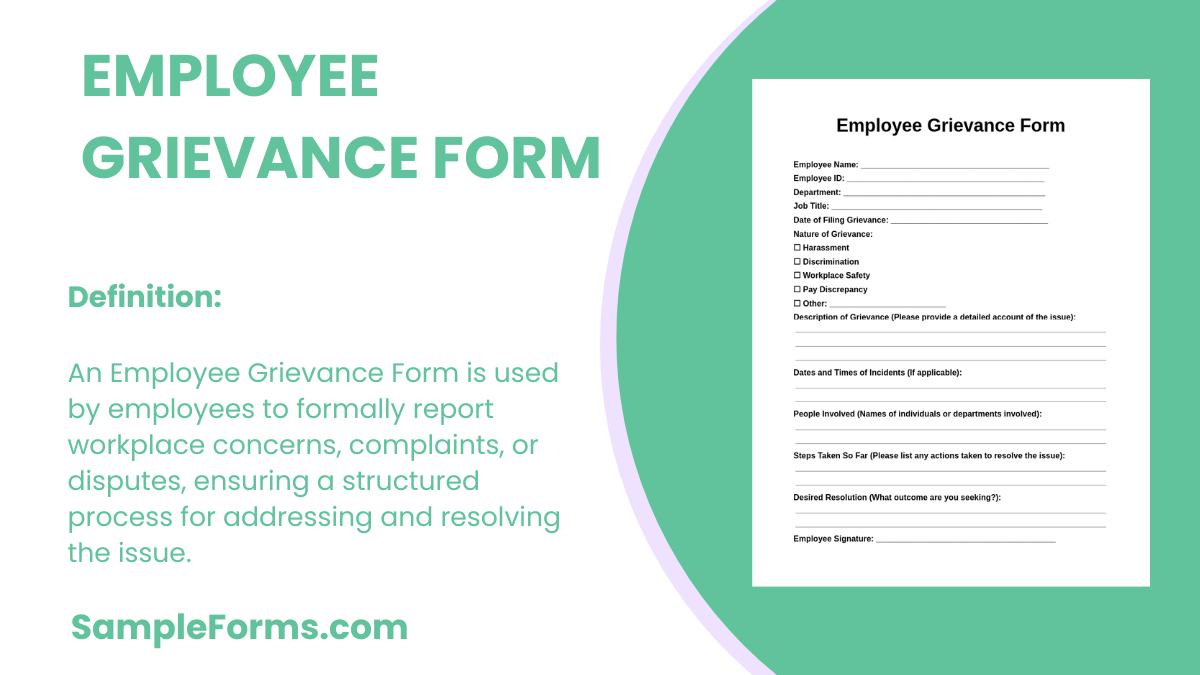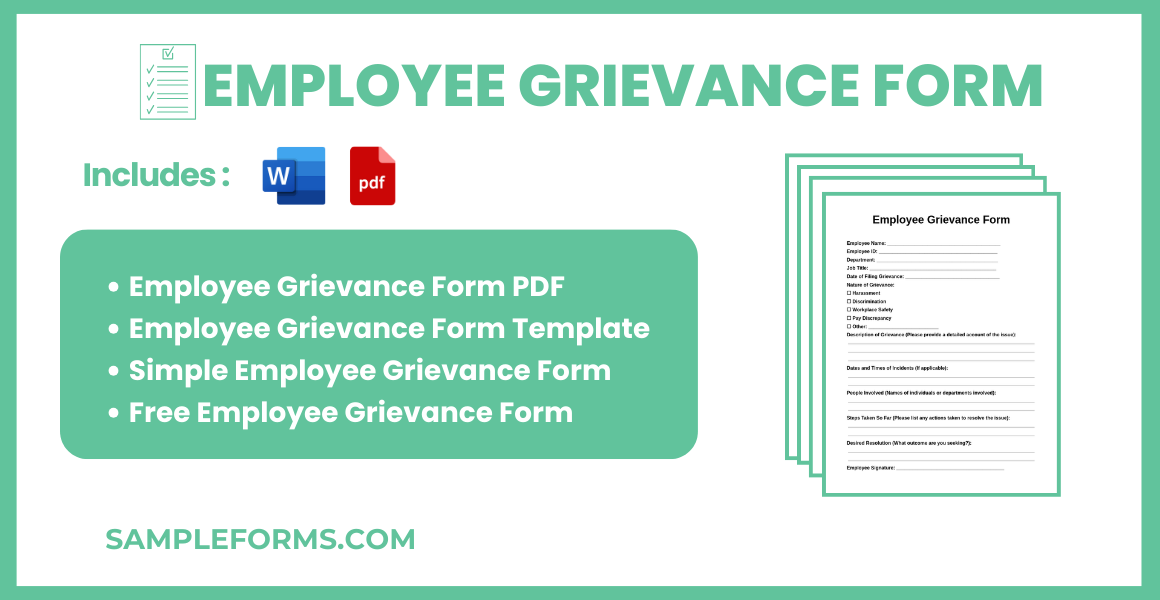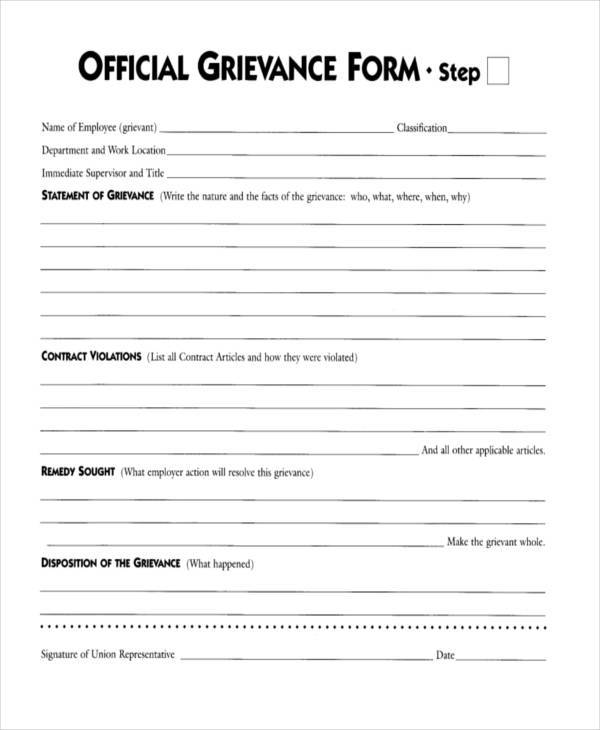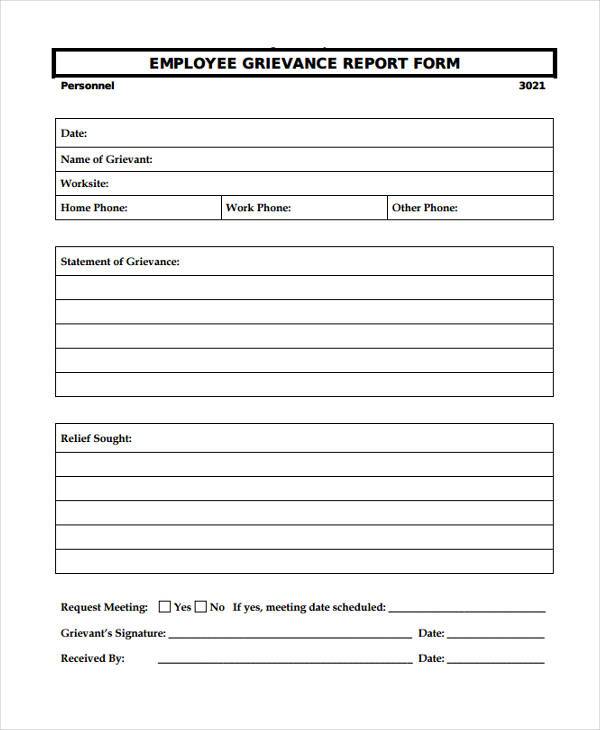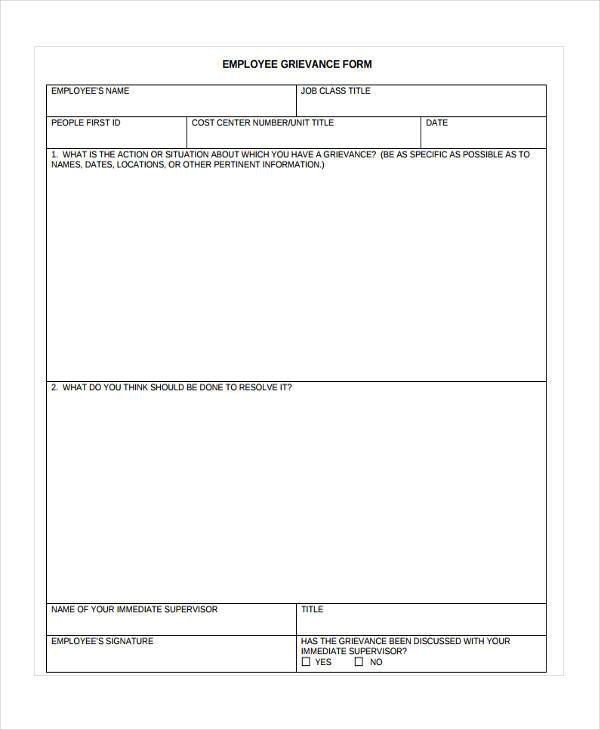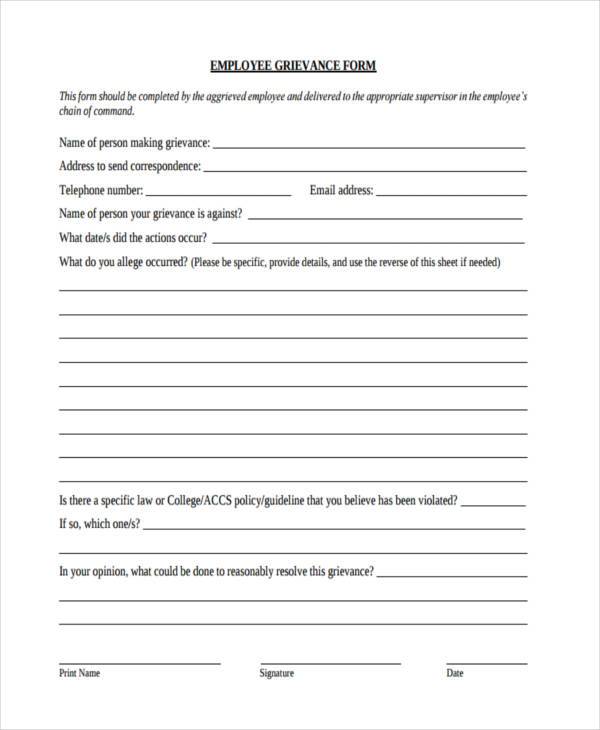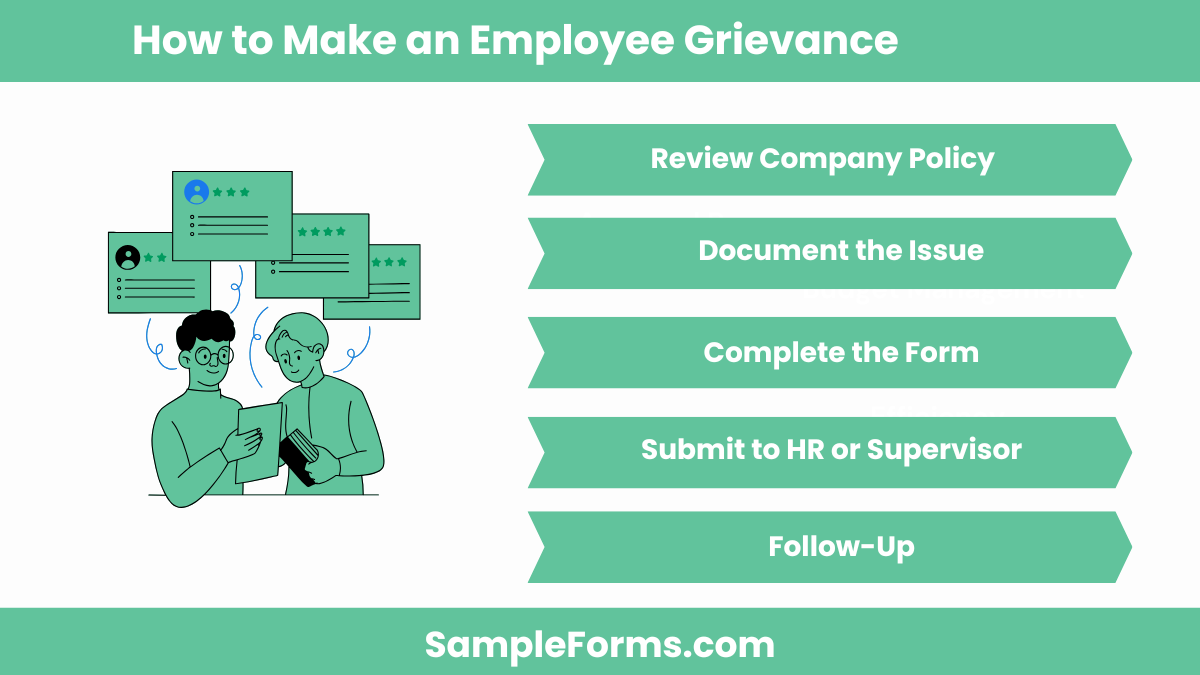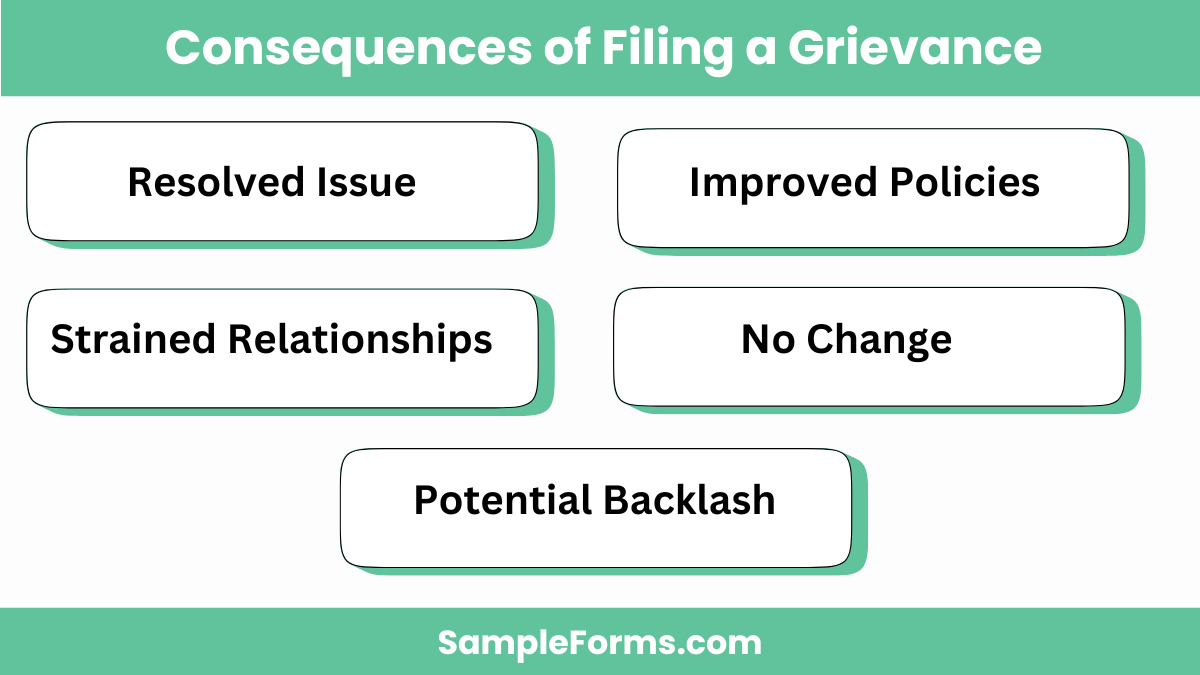An Employee Grievance Form is essential for resolving workplace issues professionally and ensuring a fair resolution. This complete guide provides detailed examples and instructions for filling out a Grievance Form to report workplace conflicts or concerns effectively. It also covers what to include in an Employee Form to ensure all relevant details are documented. Learn how to properly document and submit a grievance, ensuring that your issue is addressed in a timely manner. With this guide, employees can navigate the grievance process confidently, protecting their rights and fostering a respectful workplace environment.
Download Employee Grievance Form Bundle
What Is Employee Grievance Form?
An Employee Grievance Form is a formal document used by employees to raise workplace concerns or complaints, such as unfair treatment, harassment, or unsafe working conditions. It allows employees to formally present their issues to management for resolution. The form typically includes sections for the employee’s details, description of the grievance, and any relevant evidence or documentation. By submitting this form, employees ensure their concerns are handled through the proper channels, promoting fairness and a healthier work environment. The grievance form is a crucial tool in maintaining open communication and addressing issues professionally.
Employee Grievance Form PDF
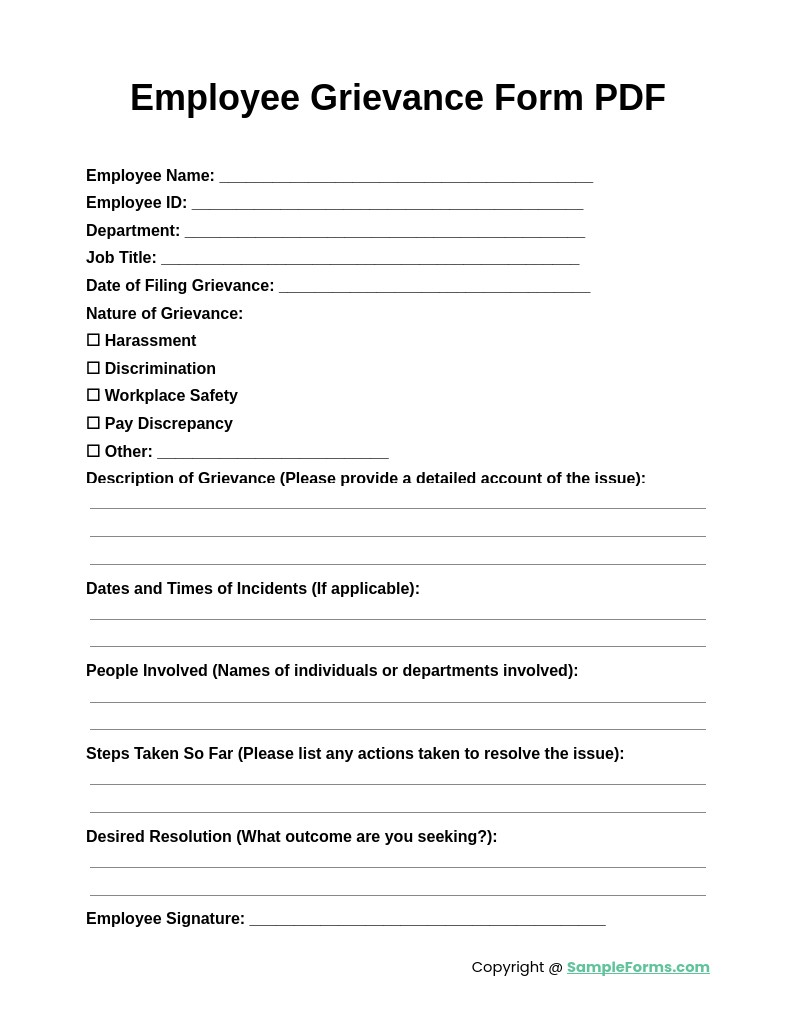
An Employee Grievance Form PDF provides a downloadable and printable format for employees to formally submit workplace concerns. It ensures ease of use and standardization, similar to how an Employee Shift Change Form streamlines scheduling requests.
Employee Grievance Form Template
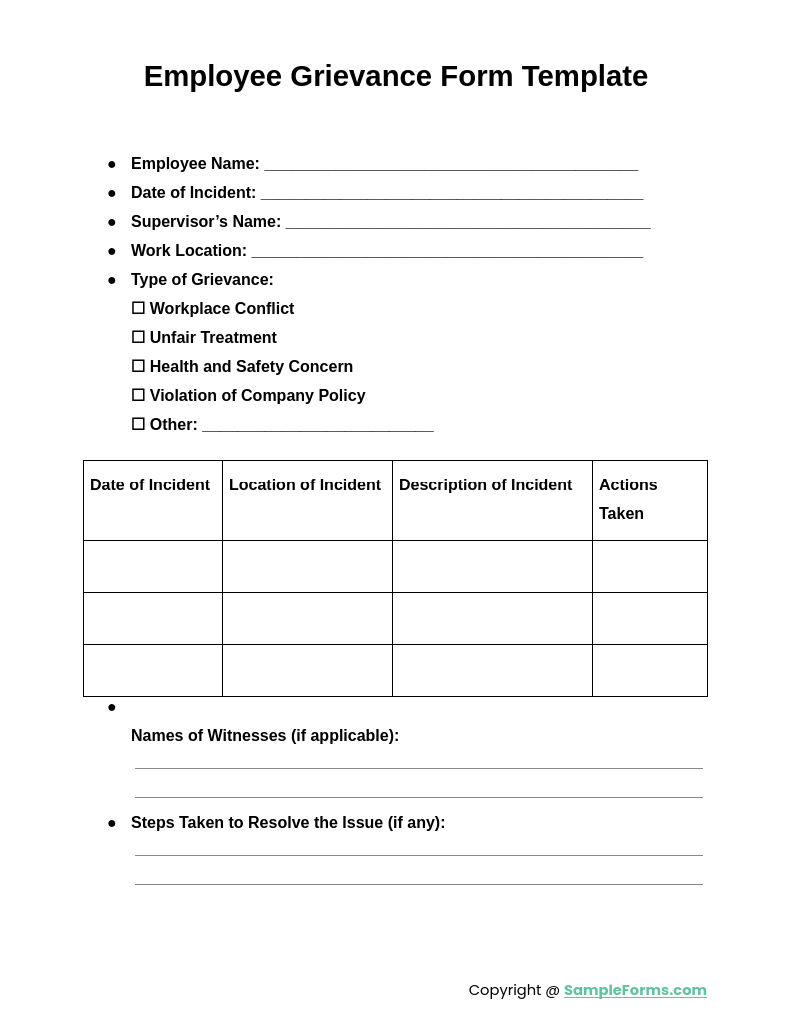
A Employee Grievance Form Template is a pre-structured document that helps employees file complaints efficiently. This template is customizable to fit various company policies, much like an Employee Resignation Form that formalizes the exit process.
Simple Employee Grievance Form
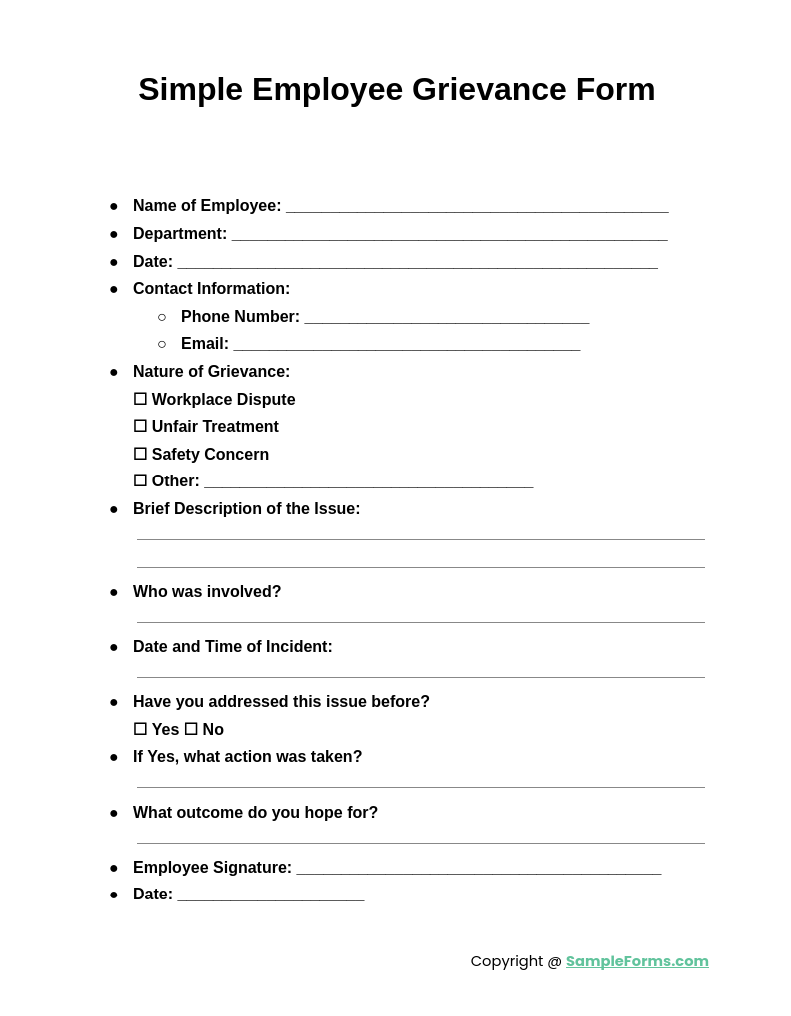
A Simple Employee Grievance Form offers a straightforward format for employees to report grievances clearly and concisely. It provides necessary sections for relevant details, similar to filling out an Employee Declaration Form to confirm important information.
Free Employee Grievance Form
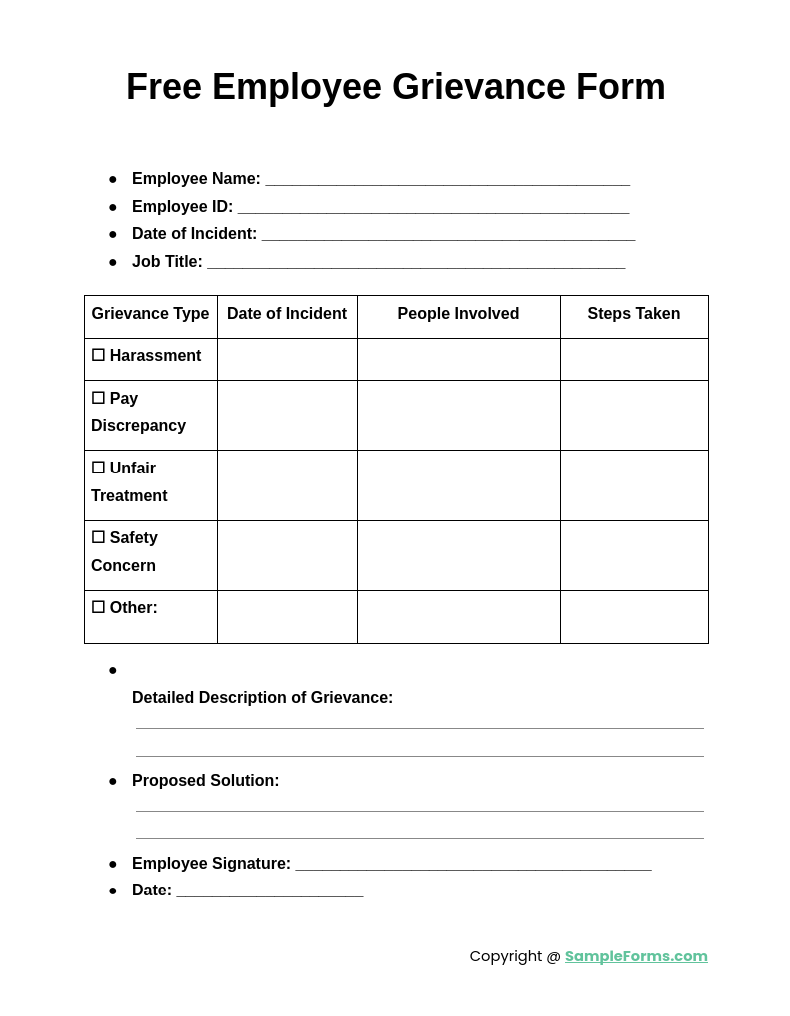
A Free Employee Grievance Form allows employees to easily access and submit their complaints without cost. It’s an accessible tool, much like an Employee Suggestion Form, which encourages employees to provide feedback for workplace improvement.
Browse More Employee Grievance Form
Employee Grievance Handling Form
Employee Grievance Resolution Form
Employee Grievance Form in PDF
Employee Grievance Report Form
Employee Grievance Form Example
Employee Grievance Form in Doc
Free Employee Grievance Form
Employee Grievance Form Sample
How Do I Make an Employee Grievance?
Making an employee grievance involves following company procedures to ensure that your concerns are addressed appropriately. Key steps include:
- Review Company Policy: Understand the formal process in your company’s handbook or Employee Bio Data Form.
- Document the Issue: Keep detailed notes of the incidents leading to the grievance.
- Complete the Form: Fill out the Employee Grievance Form with relevant information about the issue.
- Submit to HR or Supervisor: Deliver the form to the appropriate authority, as outlined in the Employee Information Form.
- Follow-Up: Maintain communication to track the progress of your complaint.
What Happens When an Employee Files a Grievance?
Filing a grievance initiates an official investigation into the complaint. The company reviews and resolves the issue. Key steps include:
- Acknowledgment: HR confirms receipt of the grievance, much like acknowledging an Employee Evaluation Form.
- Investigation: An inquiry into the issue is conducted to gather relevant facts.
- Interviews: Parties involved are interviewed to understand the situation better.
- Resolution: A decision is made to resolve the issue.
- Outcome Communication: The decision is communicated to the employee, similar to issuing an Employee Write Up Form.
What Are the Consequences of Filing a Grievance?
Filing a grievance can lead to both positive and negative outcomes depending on the issue and resolution. Possible consequences include:
- Resolved Issue: The grievance may lead to positive changes in the workplace.
- Improved Policies: A grievance may prompt the company to revise policies.
- Strained Relationships: Filing can strain relationships with colleagues or management.
- No Change: Sometimes, grievances are dismissed with no action taken.
- Potential Backlash: In rare cases, retaliation could occur, requiring an Employee Clearance Form for protection.
What Are the Three Most Common Grounds for Grievances?
Grievances typically stem from recurring workplace issues. The most common grounds include:
- Unfair Treatment: Employees feeling discriminated against or unfairly treated.
- Workplace Harassment: Bullying or harassment from colleagues or managers.
- Safety Violations: Concerns over unsafe working conditions, documented in an Employee End of Day Report Form.
- Wage Disputes: Disagreements about pay or benefits.
- Unclear Expectations: Miscommunication of job roles or responsibilities.
What Are the Disadvantages of Grievance?
While grievances are necessary for resolving issues, they can have downsides as well. Disadvantages include:
- Time-Consuming: The process can take a significant amount of time to complete.
- Strained Relations: Grievances may lead to tensions between employees and management, like issues highlighted in an Employee Requisition Form.
- Stressful: Filing and following up on a grievance can cause emotional stress.
- Potential Retaliation: Some employees fear retaliation from management or colleagues.
- No Guarantee of Resolution: The issue may remain unresolved, despite filing the grievance.
Can an Employee File a Grievance Against Another Employee?
Yes, an employee can file a grievance against another employee for issues such as harassment, bullying, or misconduct, using an Employee Statement Form to document the incident.
When to File a Grievance Against a Coworker?
File a grievance when workplace conflicts, like harassment or discrimination, cannot be resolved informally. Use an Employee Personal Information Form to maintain proper documentation.
How Do You Win a Grievance Against an Employer?
Winning a grievance involves providing clear evidence, proper documentation, and following procedures. Regularly updating your Employee Onboarding Checklist Form helps build your case.
How Does Grievance Pay Work?
Grievance pay compensates employees when their grievance, such as wrongful termination, is upheld. It might coincide with an Employee Status Change Form to reflect the resolution.
What Does It Mean When an Employee Files a Grievance?
When an employee files a grievance, they formally report an issue like unfair treatment. An Employee Transfer Form may be used if workplace reassignment is a solution.
Is It Worth It to File a Grievance?
Yes, filing a grievance can lead to resolving workplace conflicts and improving conditions, especially when documented properly through an Employee Assessment Form.
What Are the 4 Steps of the Grievance Process?
The four steps include filing the grievance, investigation, resolution, and follow-up. An Employee Performance Appraisal Form may help during the resolution phase.
What Is Not Considered a Grievance?
Complaints about general dissatisfaction without a violation of policies or rights are not considered grievances, unlike documented issues in an Employee Shift Swap Form.
Why Would Someone File a Grievance at Work?
Employees file grievances for issues like harassment, unfair treatment, or unsafe working conditions, often documented through an Employee Counseling Form for proper resolution.
What to Say When Filing a Grievance?
Be clear and factual, stating the issue and how it violates policies, similar to providing accurate information in an Employee Address Form for official documentation.
In conclusion, the Employee Form serves as a key tool for addressing workplace issues and ensuring fair treatment. Through the use of forms, such as the Employee Survey Form, organizations can gather insights into employee concerns and foster a positive work environment. By submitting a grievance form, employees ensure their voices are heard, and management has a clear record of the issue. This process creates an opportunity for fair and structured conflict resolution, ultimately leading to a more supportive and collaborative workplace culture. Using well-structured forms is essential for maintaining transparency and trust in any organization
Related Posts
-
FREE 51+ Termination Forms in PDF | MS Word | XLS
-
FREE 5+ Recruiter Performance Review Forms in PDF | MS Word
-
FREE 4+ Payroll Reallocation Forms in PDF | Excel
-
FREE 4+ Employment Eligibility Verification Forms in PDF
-
FREE 4+ Skills Analysis Forms in PDF | MS Word
-
Employment Reference Form
-
FREE 4+ Incorporation Forms in PDF | MS Word
-
New Hire Form
-
FREE 6+ Employee Manual Acknowledgment Forms in MS Word | Pages | PDF
-
Employee Nomination Form
-
FREE 4+ Employee Time Sheet Forms in MS Word | Excel | PDF
-
Employee End of Day Report Form
-
Employment Rejection Letter
-
FREE 4+ Employee Termination Checklist Forms in MS Word | Excel | PDF
-
FREE 9+ Employment Eligibility Forms in PDF | MS Word
